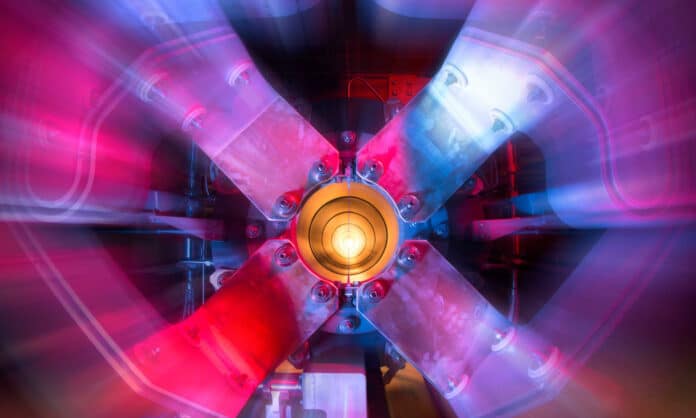Despite being one of the most abundant particles in our universe, Neutrinos are notoriously difficult to detect and study. That’s because they lack electrical charge and mass. Hence, they are referred to as “ghost particles” because they rarely interact with atoms. But they could be used to answer fundamental questions about the universe.
For the first time, scientists from the University of Rochester— scientists from the international collaboration MINERvA, have investigated the structure of protons using these ghost particles. In particular, they used a beam of neutrinos at the Fermilab to examine the structure of protons.
Tejin Cai, the paper’s first author, said, “We weren’t sure at first if it would work, but we ultimately discovered we could use neutrinos to measure the shape and size of the protons that make up the nuclei of atoms. It’s like using a ghost ruler to make a measurement.”
The first measurement of a proton’s size was made in the 1950s. At that time, scientists used an accelerator with beams of electrons at Stanford University’s linear accelerator facility. However, scientists’ new method uses neutrinos beams rather than accelerated electron beams. This new method gives scientists further information about the interaction of neutrinos and protons.
Kevin S. McFarland, Dr. Steven Chu Professor of Physics at Rochester, said, “By using our new measurement to improve our understanding of these nuclear effects, we will better be able to carry out future measurements of neutrino properties.”
Typically scientists use only hydrogen atoms in experiments to measure protons. But a target of pure hydrogen wouldn’t be sufficiently dense for enough neutrinos to interact with the atoms. So, scientists in this study performed a chemical trick by binding the hydrogen up into hydrocarbon molecules that make it able to detect sub-atomic particles.
The MINERvA group conducted their experiments using a high-power, high-energy particle accelerator located at Fermilab. The accelerator produces the strongest source of high-energy neutrinos on the planet.
Scientists struck their detector made of hydrogen and carbon atoms with the beam of neutrinos and recorded data for nearly nine years of operation. The background “noise” from the carbon atoms has to be removed to focus solely on the information from the hydrogen atoms.
Cai said, “The hydrogen and carbon are chemically bonded together, so the detector sees interactions on both at once. I realized that a technique I was using to study interactions on carbon could also be used to see hydrogen all by itself once you subtract the carbon interactions. A big part of our job was subtracting the very large background from neutrinos scattering on the protons in the carbon nucleus.”
Deborah Harris, a professor at York University and a co-spokesperson for MINERvA said, “When we proposed MINERvA, we never thought we’d be able to extract measurements from the hydrogen in the detector. Making this work required great performance from the detector, creative analysis from scientists, and years of running” the accelerator at Fermilab.”
Cai said, “The analysis result and the new techniques developed highlight the importance of creativity and collaboration in understanding data. While many of the analysis components already existed, putting them together in the right way made a difference, and this cannot be done without experts with different technical backgrounds sharing their knowledge to make the experiment a success.”
Journal Reference:
- Cai, T., Moore, M.L., Olivier, A. et al. Measurement of the axial vector form factor from antineutrino–proton scattering. Nature 614, 48–53 (2023). DOI: 10.1038/s41586-022-05478-3
